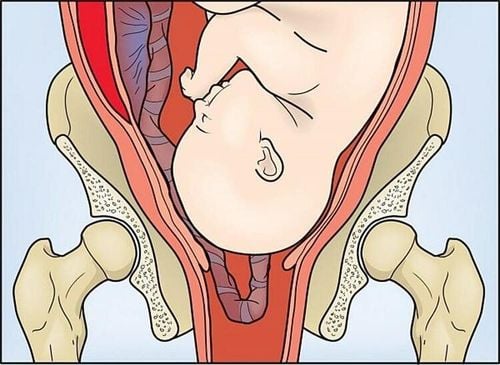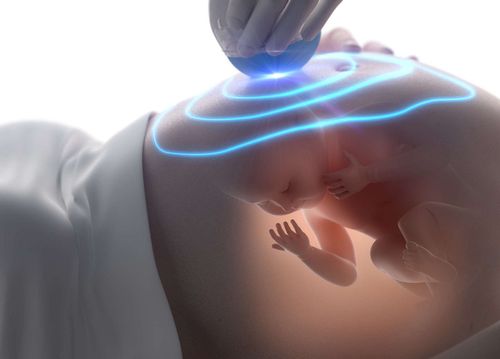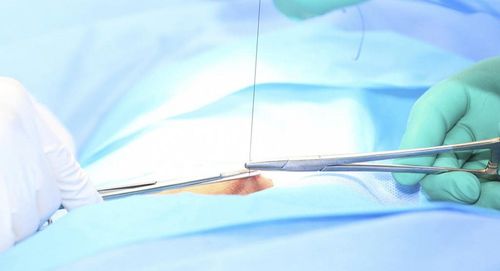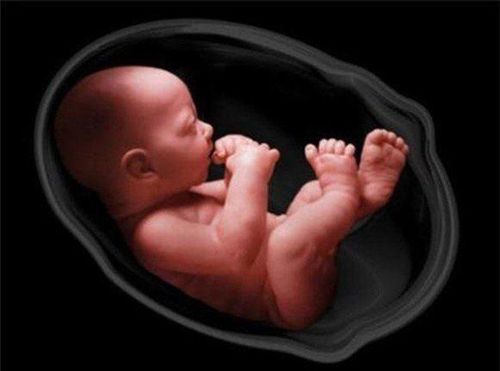This is an automatically translated article.
Prolapsed umbilical cord, also known as umbilical cord miscarriage, is one of the obstetric complications that has the potential to be dangerous for both the mother and the fetus. Umbilical cord prolapse is the term for an abnormality in the position of the umbilical cord in front of or on the side of the fetus, which leads to compression of the umbilical cord during labor and causes anemia in the fetus. pediatric.
1. What is umbilical cord prolapse?
Prolapse of the umbilical cord is a condition in which the umbilical cord is below or on the side of the fetus, ie, the umbilical cord will descend into the cervix and enter the birth canal before the fetus. Normally, the umbilical cord prolapses when the water breaks, but there are also cases where the umbilical cord prolapses when the amniotic sac has not broken. If the umbilical cord prolapse is mild, it does not cause any serious problems, about 10 births, there is 1 case of umbilical cord prolapse. In case of emergency, if the umbilical cord prolapses without removing the fetus, the fetus will likely die within 30 minutes due to fetal failure.
The umbilical cord has a role in providing important nutrients for the developing fetus. If the umbilical cord prolapses and becomes compressed, the flow of blood and oxygen to the fetus will be blocked or interrupted, causing anemia or changes in the fetal heart rate. Umbilical cord prolapse can occur in late pregnancy, especially during labor.
2. Harm of umbilical cord prolapse in fetus
If the prolapse of the umbilical cord is dangerous without intervention, it will cause serious harm such as the fetal heart rate is changed due to compression or more dangerous, the heart stops beating, causing acidosis. Respiratory failure is caused by the accumulation of Co2 gas in the blood, causing brain damage due to obstruction of the blood and oxygen supply to the fetus, fetal death or fetal distress.

Nếu tình trạng sa dây rốn nguy hiểm mà không được can thiệp sẽ gây ra các tác hại nghiêm trọng
3. Causes and signs of umbilical cord prolapse
The phenomenon of umbilical cord miscarriage occurs can be caused by maternal causes and can also be caused by fetal causes. Some pregnant women go through the process of giving birth many times, so the self-alignment of the fetal position is not good, causing an abnormal position, or pregnant women with a tumor in the prostate, a distorted or narrow pelvis are also easy. umbilical cord prolapse occurs. Or there are cases where the umbilical cord is longer than usual or during pregnancy, polyhydramnios occurs, sudden rupture of membranes can also lead to umbilical cord prolapse. However, if the fetus has an abnormal position, it is also one of the easy causes of umbilical cord prolapse.
Some subjects are at risk of umbilical cord prolapse during pregnancy, including:
Women carrying twins, multiple pregnancies Pregnant women with an unfavorable fetal position, abnormal fetal position The position of the umbilical cord is attached to the lower edge of the placenta clinging to a low position Pregnant woman who has had many births The umbilical cord is longer than usual Due to the sudden rupture of membranes Pregnant woman has a very narrow pelvis or a distorted pelvis Signs to know Umbilical cord prolapse phenomenon includes pregnant women can be detected umbilical cord prolapse status through ultrasound images, pregnant women feel the umbilical cord prolapsed in the vagina, pregnant women can see the umbilical cord protruding out with amniotic fluid.
When feeling abnormal signs of the umbilical cord, pregnant women need to calm down and call an ambulance to the nearest medical facility for intervention and support. While waiting for the ambulance to arrive, pregnant women should pay attention to stay in a kneeling position, elbows and hands down on the floor to avoid too much compression of the umbilical cord.
4. Treatment of umbilical cord prolapse
The current popular method of treating prolapsed umbilical cord is infusing amniotic fluid into the uterus of a pregnant woman during labor to reduce pressure on the umbilical cord. In cases where the umbilical cord is slightly compressed, the doctor will recommend treatment by increasing the amount of oxygen for the fetus to supply blood to the fetus. If fetal distress occurs, the pregnant woman may be indicated for a caesarean section.
Prolapse of the umbilical cord can have dangerous complications for both the fetus and the pregnant woman. Therefore, from the 38th week of pregnancy, pregnant women need to go to the doctor and check regularly until labor.
At Vinmec International General Hospital, there is a package maternity service as a solution to help pregnant women feel secure because of the companionship of the medical team throughout the pregnancy. When choosing Maternity Package, pregnant women can:
The pregnancy process is monitored by a team of qualified doctors Regular check-up, early detection of abnormalities Maternity package helps to facilitate the process. Birthing Program Newborns receive comprehensive care For more information about all-inclusive maternity service packages, please contact the hospitals and clinics of Vinmec Health system nationwide.
Please dial HOTLINE for more information or register for an appointment HERE. Download MyVinmec app to make appointments faster and to manage your bookings easily.
References: msdmanuals.com,













